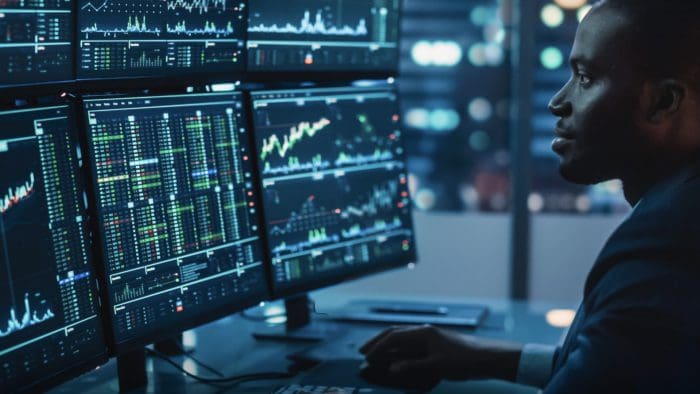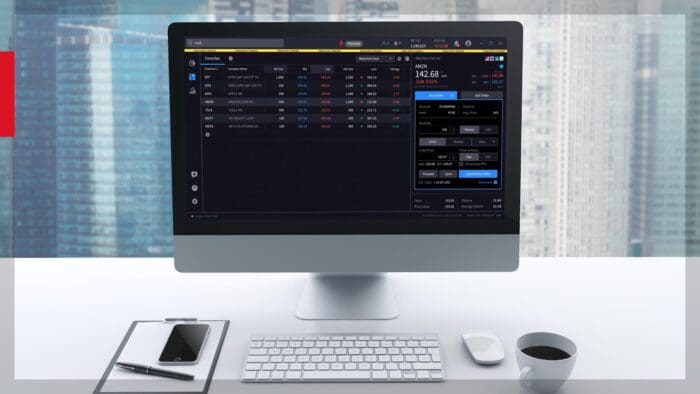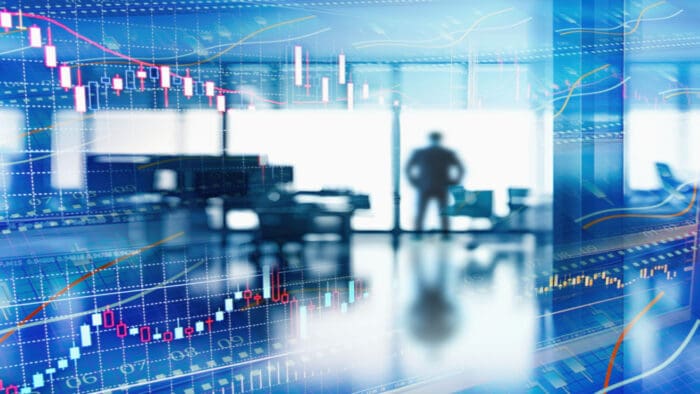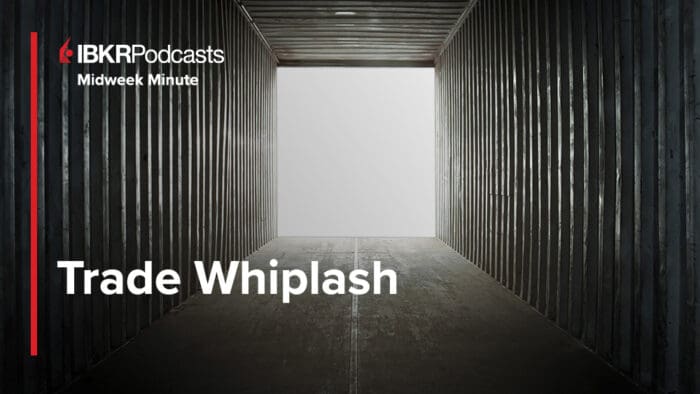When tweets move treasuries and tariffs rattle rates, who’s really pulling the strings on Wall Street? We dive into the politics-meets-markets drama with bond trader Michel Sommer to unpack the so-called “Trump Put” and what it means for the Fed, yields, and U.S. credibility.
Summary – IBKR Podcasts Ep. 249
The following is a summary of a live audio recording and may contain errors in spelling or grammar. Although IBKR has edited for clarity no material changes have been made.
Andrew Wilkinson
Welcome to today’s podcast. My name’s Andrew Wilkinson at Interactive Brokers. Now, global government bond prices have fallen sharply in the wake of the turmoil brought about by a modelled tariff policy from the Trump administration. That means that the cost of borrowing has risen for governments at a time when the global economy could be heading into at least a slowdown, if not a full-blown recession. Here to discuss is Michel Sommer, electronic bond trader from Interactive Brokers. How are you, Michel?
Michel Sommer
I am doing very well. Thank you so much.
Andrew Wilkinson
Tell us where you see the US bond market right now.
Michel Sommer
Well, right now we’re in a period of quite a lot of volatility. You know, as you stated, regarding the Trump policies, the US policies with tariffs, and the latest comments over the weekend about relieving Powell from the Treasury has caused quite the stir in markets. And they’re reacting. Every time there’s a policy change or statement that comes from the White House, we tend to see a big move. Ten years currently at about a 4.36 with a very steep curve—the steepest we’ve seen in a while. If you go back to the seventh, we saw a 70 basis point move in the ten-year, from a 3.85 up to a 4.58 in just a week. And then we saw the reversal in three days back down to a 4.26. This morning we’ve seen buying in the front end of the bond curve, outflows in the long end, causing the curve to steepen even more. With the increased rhetoric over the weekend regarding Chairman Powell, it’s left investors and traders exhausted, and we’re waiting to see news coming out of the White House.
Andrew Wilkinson
If President Trump managed to persuade the Fed to cut interest rates almost in an emergency fashion, that might even have a dire effect on the bond market. That might even send ten-years up, which—long notes and bonds—yields higher, and it would be seen as a bit of a shot in the foot, wouldn’t it, Mike?
Michel Sommer
It would, yeah, because basically what we would see is the pressure to the Fed to drop rates sooner than they really state that they want to. It would really call into question whether the central bank and the Fed really has independence from the presidential administration, and it would politicize everything, and it would just cause the whole world to lose confidence in the US as one of the market leaders and a safe haven.
Andrew Wilkinson
What do you think the bond market is telling us currently about the future health of the US economy?
Michel Sommer
Well, we’re on edge. Investors are on edge. Again, statements outta the White House. We just had a statement from President Trump that Jerome Powell’s termination cannot come fast enough, right? Again, that’s put us on edge and it’s really pushing the indication that the central bank doesn’t have its independence, right? And if the central bank doesn’t have its independence, again, it’s politicizing the whole system here. And we’d see, as we do in a lot of emerging market countries, a very steep curve.
Andrew Wilkinson
How about US government debt performance relative to debt from other governments? How’s the US performing? What are spreads doing?
Michel Sommer
We’ll start off by saying that US Treasuries, along with gold and the US dollar, have historically been considered a safe haven. So, typically in times of turbulence, you see investors come in and buy US Treasuries, gold, invest in the dollar. But what we’ve seen—because it’s really the US policies that have caused some of this turbulence—real money and fast money investors have been de-leveraging. They’ve been taking money out, and it hasn’t been like the world, such as China, just unloading all their positions, but we’ve seen deleveraging—people putting money into European government securities, right? So that being said, spreads between US and European governments have moved significantly in both directions as policy comments come out of the White House. So we’ve seen whipsaw in the rates.
Andrew Wilkinson
So, Michel, some commentators are noting the possible end of what’s been called US exceptionalism. How important is that for US debt and the US dollar in your opinion?
Michel Sommer
It’s very important. We can’t take for granted that the world has historically looked at the US as a global leader and a safe haven. So if the world loses confidence in the US—which we’re seeing the early stages of—we’ll see the dollar continuing to weaken and the steepening of the bond curve. We’ve already started to see the Eurodollar move. We had a 14 big-figure move since January, and it’s levels we haven’t seen since 2022. If uncertainty in the US continues, we’ll see continued sell-off in the long end of the US debt, which will push US interest rates higher, and ultimately we’ll see a spike in inflation.
Andrew Wilkinson
People have referred to the Fed put when it comes to the scale of falling equity prices. The theory is that if stock prices fall so far, the Fed will step in and they’ll cut interest rates ’cause the economy’s going to hell in a handbasket. Recently we heard the term “Trump put” mentioned when the yield on the ten-year US note reached about four and a half percent in the last couple of weeks. Can you explain the concept of the Trump put and why this is important from a policy-setting perspective?
Michel Sommer
Absolutely. So the Trump put is very similar to that of the Fed put. President Trump’s very cognizant of US markets and how they’re performing. So when markets reach uncomfortable levels, Trump dials back his tariff policy to ease concerns and allow markets to settle down. Trump ultimately wants a weaker dollar—a more favorable trading environment, if you will. So he wants to bring manufacturing jobs back to the US, but if he pushes his agenda too hard and quickly, he causes a whipsaw in global markets. So basically the Trump put—when these markets reached that uncomfortable level like they did when the ten-year hit 4.50—he dialed back on his policies to allow the market to take a breather and settle down and calm the market.
Andrew Wilkinson
That’s a bit of a dangerous policy stance though, isn’t it?
Michel Sommer
I would think so, right? If you have small incremental moves versus rapid whipsaws, it’s better for the global economy and the US as a whole.
Andrew Wilkinson
Michel Sommer from our voice broker desk on the electronic bond side, thank you very much for joining me today.
Michel Sommer
Pleasure. Thank you.
Andrew Wilkinson
And if you enjoyed today’s podcast, don’t forget—subscribe wherever you download your podcasts from. Bye for now.
Join The Conversation
For specific platform feedback and suggestions, please submit it directly to our team using these instructions.
If you have an account-specific question or concern, please reach out to Client Services.
We encourage you to look through our FAQs before posting. Your question may already be covered!
Leave a Reply
Disclosure: Interactive Brokers
The analysis in this material is provided for information only and is not and should not be construed as an offer to sell or the solicitation of an offer to buy any security. To the extent that this material discusses general market activity, industry or sector trends or other broad-based economic or political conditions, it should not be construed as research or investment advice. To the extent that it includes references to specific securities, commodities, currencies, or other instruments, those references do not constitute a recommendation by IBKR to buy, sell or hold such investments. This material does not and is not intended to take into account the particular financial conditions, investment objectives or requirements of individual customers. Before acting on this material, you should consider whether it is suitable for your particular circumstances and, as necessary, seek professional advice.
The views and opinions expressed herein are those of the author and do not necessarily reflect the views of Interactive Brokers, its affiliates, or its employees.
Disclosure: Futures Trading
Futures are not suitable for all investors. The amount you may lose may be greater than your initial investment. Before trading futures, please read the CFTC Risk Disclosure. A copy and additional information are available at ibkr.com.
Disclosure: Forex
There is a substantial risk of loss in foreign exchange trading. The settlement date of foreign exchange trades can vary due to time zone differences and bank holidays. When trading across foreign exchange markets, this may necessitate borrowing funds to settle foreign exchange trades. The interest rate on borrowed funds must be considered when computing the cost of trades across multiple markets.
Disclosure: IBKR Spot Gold
U.S. Spot Gold trading through IB LLC accounts is only available to legal residents of the United States that do not reside in Arizona, Montana, New Hampshire, and Rhode Island.
















It seems the big hedge funds have again profited in taking stocks down. Now they reverse and buy the dip with short covering the puts. Its a win win, of course !